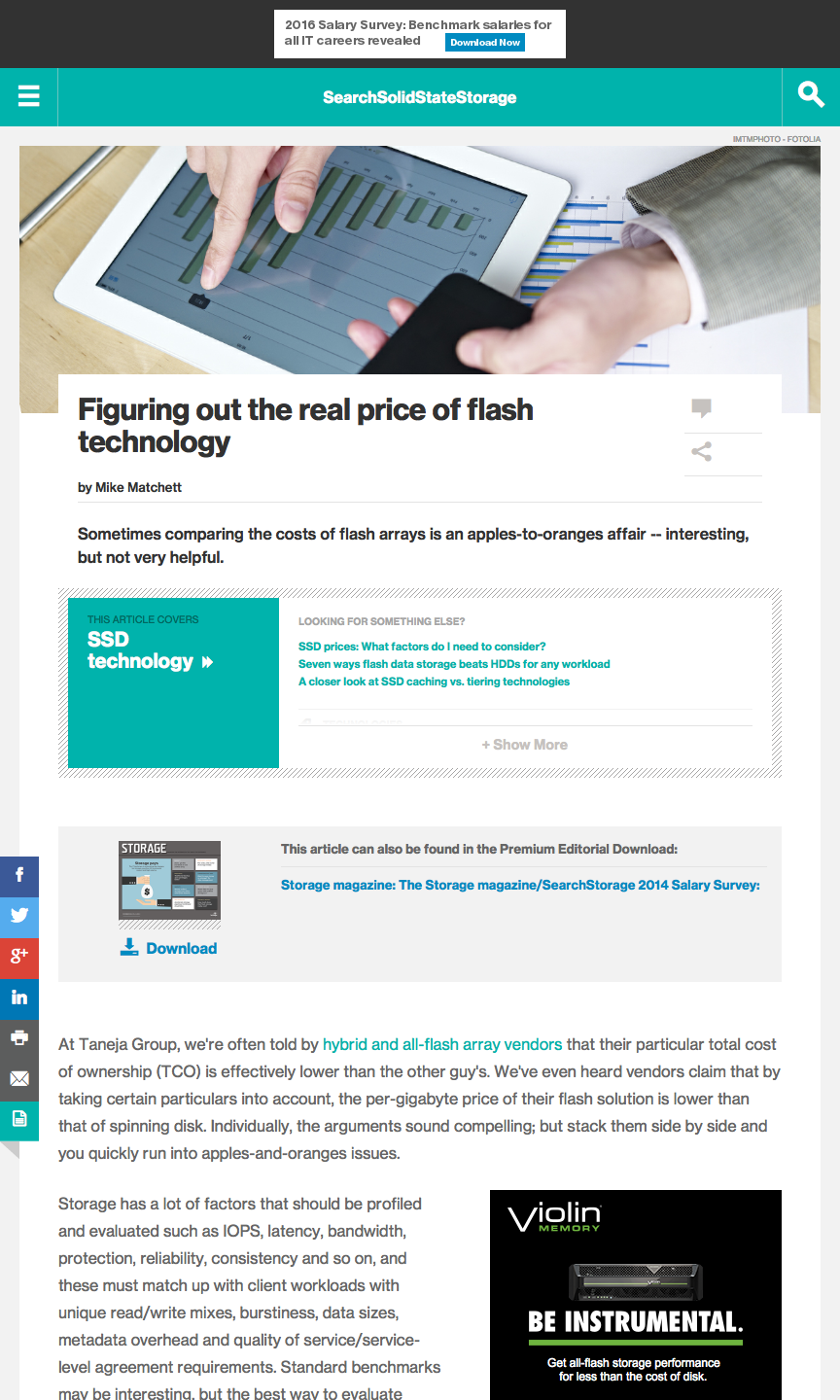Figuring out the real price of flash technology

An IT industry analyst article published by SearchSolidStateStorage.
Sometimes comparing the costs of flash arrays is an apples-to-oranges affair — interesting, but not very helpful.
 We’re often told by hybrid and all-flash array vendors that their particular total cost of ownership (TCO) is effectively lower than the other guy’s. We’ve even heard vendors claim that by taking certain particulars into account, the per-gigabyte price of their flash solution is lower than that of spinning disk. Individually, the arguments sound compelling; but stack them side by side and you quickly run into apples-and-oranges issues.
We’re often told by hybrid and all-flash array vendors that their particular total cost of ownership (TCO) is effectively lower than the other guy’s. We’ve even heard vendors claim that by taking certain particulars into account, the per-gigabyte price of their flash solution is lower than that of spinning disk. Individually, the arguments sound compelling; but stack them side by side and you quickly run into apples-and-oranges issues.
Storage has a lot of factors that should be profiled and evaluated such as IOPS, latency, bandwidth, protection, reliability, consistency and so on, and these must match up with client workloads with unique read/write mixes, burstiness, data sizes, metadata overhead and quality of service/service-level agreement requirements. Standard benchmarks may be interesting, but the best way to evaluate storage is to test it under your particular production workloads; a sophisticated load gen and modeling tool like that from Load DynamiX can help with that process.
But as analysts, when we try to make industry-level evaluations hoping to compare apples to apples, we run into a host of half-hidden factors we’d like to see made explicitly transparent if not standardized across the industry. Let’s take a closer look…
…(read the complete as-published article there)
